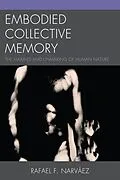The human body is not a given fact; it is not, as Descartes believed, a "machine made up of flesh and bones." The body is acquired, achieved, and learned. It is thus full of mimetic and mnemonic implications. The body remembers, and it does so in collectively relevant ways. Gestures, corporeal and phonetic rhythms, affective idioms, and emotional styles - perceptual, sensorial, motoric, and affective schemata - are all largely learned in shared social contexts.
These aspects of the embodied experience are often consigned to habit, to bodily automatisms, and to corporeal memories that reflect aspects of culture. But if the body reflects certain aspects of culture that press to become naturalized and organically attached to social actors, it also resists these kinds of cultural pressures. These adaptive and resistive dynamics, as this book shows, are not without consequences for individuals and groups. These processes can result in both advantages and disadvantages for social actors. They can take us toward certain futures while foreclosing others. It is therefore necessary to understand how, why, and to what extent corporeal memories are constructed but also resisted, modified, or created anew.
Autorentext
By Rafael F. Narváez
Inhalt
Introduction
1. The French Sociological Tradition
2. Pierre Bourdieu
3. Somatic Compliance, Somatic Deviance
4. Symbolic Violence vs. Creativity
5. Resistive Mechanisms (Phylogeny)
6. Basic Instincts: Eros and Thanatos
7. The Subject (Ontogeny)
8. Biology and Meaning (Phylogeny)
9. Biology and Meaning (Ontogeny)
10. Embodying the Past and Embodying the Future
11. An Example of Embodied Collective Memory: Race
12. Layers of ECMs
13. External Features of ECMs
14. Internal Features of ECMs
15. Perceptual Collective Memory: The Eye
16. The Role of Institutions
Appendix: Psychoanalysis as a "Failed Science"
References
Index
